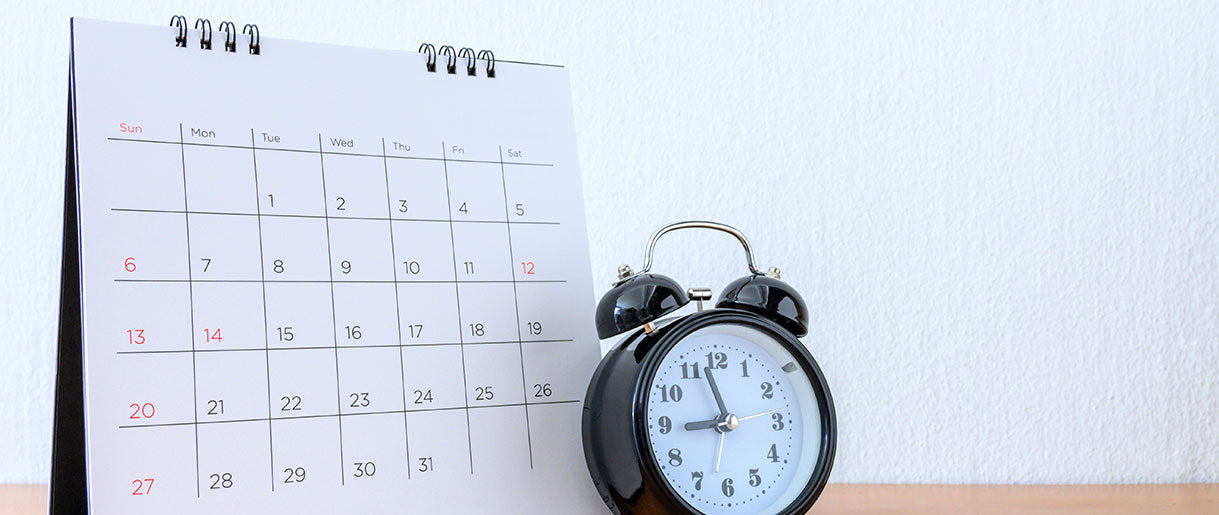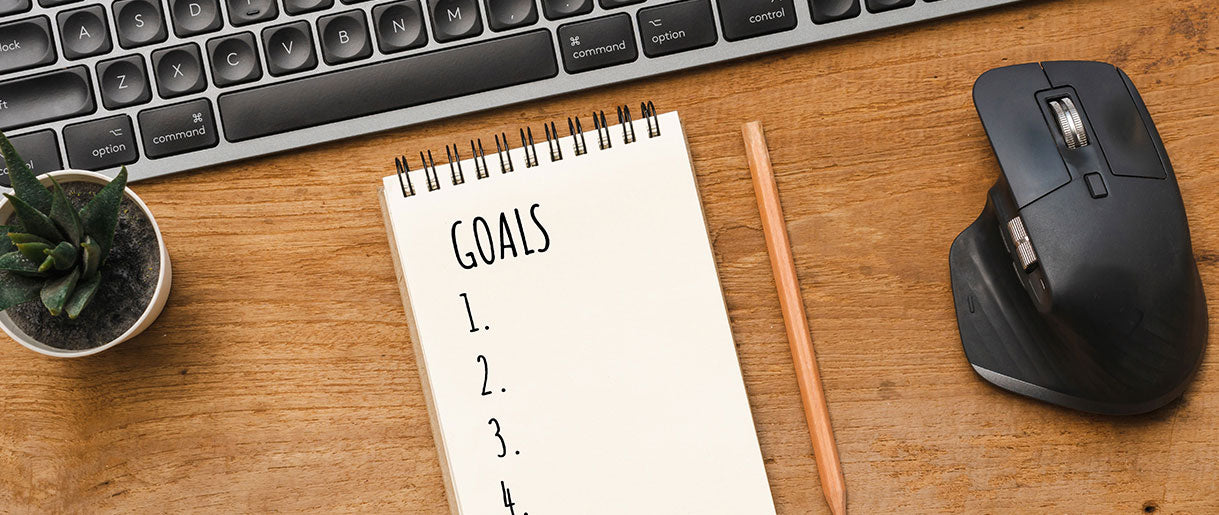Hey there, procrastination warrior!
Let's be real, we've all been there—staring at a daunting to-do list, wondering where to even begin. But what if we told you that the secret to kicking procrastination to the curb is simpler than you think?
Here's the golden nugget of wisdom: Break your tasks into small, manageable steps and start with just one. It's about taking that first, small, non-intimidating step.
Yep, that's it! No need for fancy planners or complex systems. Just start with something easy and let the momentum carry you forward.
But wait, there's more!
Another game-changing tip is to create a dedicated workspace that promotes focus and productivity.
Find a quiet spot, declutter your desk, and make sure you have all the tools you need within reach. By crafting an environment that supports your goals, you'll be less likely to get sidetracked by distractions.
Sounds too good to be true?
Well, this guide is all about turning those "I'll do it laters" into "I'm crushing it right now!"
10 Ways to Fight Procrastination
1. Break Tasks into Smaller Steps
Let's talk about tackling big, scary tasks. You know, the ones that make you say, "I'll start tomorrow" every single day?
The secret is simple: break them down into bite-sized pieces. Here's how:
- Start with a Brain Dump: Jot down everything about the task. Don't worry about order or details; just get it all out.
- Organize and Prioritize: Now, sort these smaller tasks. Which ones are crucial? Which can wait? Arrange them in a logical order.
Imagine you're baking a cake. You wouldn't just throw flour, eggs, and sugar into a bowl and hope for the best, right? You'd follow steps. Same thing here.
Breaking tasks into smaller steps—or sub-tasks—is a productivity hack you should have on your morning routine for success.
When a task feels too big, slice it up into steps like "gather ingredients" or "preheat the oven." Suddenly, starting isn't so daunting anymore. Before you know it, you're not just starting tasks; you're finishing them!🍰👩🍳
2. Set Clear Deadlines

Alright, let's dive into the world of deadlines. Now, we know what you're thinking: "Deadlines? Yikes!" But hear us out.
Deadlines are secret weapons against procrastination. Here's how to make them work for you:
- Be Specific: Saying, "I'll do this sometime next week," is too vague. Mark a specific date and time on your calendar. For example, "Complete report by Tuesday at 3 PM."
- Visible Reminders: Put these deadlines where you can see them. Sticky notes on your desk, digital reminders, or a big calendar on your wall—whatever catches your eye.
Think of deadlines like a friendly race. You naturally pick up the pace when you know the finish line is approaching.
But there's a trick to it: be realistic. Setting a deadline to learn Mandarin in a week isn't just ambitious; it's setting yourself up for a sprint you can't win.
And here's a little secret: the satisfaction of meeting a deadline? It's addictive.
Once you start hitting them and see you are having productive days, you'll want to keep that winning streak going.✨📅
3. User a Timer
Now, let's turn our attention to the humble yet mighty timer. This little gadget (or app, if you're digitally inclined) can be your best ally in the battle against procrastination.
Here's how to make the most of it:
- Pick Your Time Frame: Something like the Pomodoro Technique works wonders. Work for 25 minutes, then break for 5. Adjust the times to what suits you best.
- Stay Strict: When the timer is on, it's pure focus time. No checking phones, no wandering thoughts. Just you and the task.
Think of the timer as a mini-challenge. You're racing against the clock, and there's a strange thrill in trying to beat it.
It's like playing a game where the prize is getting things done. And when that timer dings for a break, it's a sweet moment of victory.⏱️🏁💪
4. Eliminate Distractions

Let's tackle the ever-present challenge of distractions.
Maintaining focus and concentration can feel like navigating a minefield in a world buzzing with notifications, social media, and endless temptations.
But fear not, here are some strategies to help you keep those distractions at bay:
- Create a Distraction-Free Zone: Dedicate a space for work where distractions are minimal. Depending on what works for you, this could mean a quiet room, a section of your living area, or even a local café.
- Tech Tactics: Use apps that block distracting websites during work hours. Turn off non-essential notifications on your phone and computer.
Picture this: you're in your 'distraction-free zone,' and it's just you and your task. No pings from your phone, no tempting tabs open on your browser.
It's like being in a productivity bubble where your focus is unbreakable. It's like entering the flow state, where only you and the task at hand exist.
But here's the real deal—sometimes, the biggest distraction is our wandering mind. So, when you sit down to work, make a quick list of potential distractions and how you'll handle them.
Is it hunger? Keep a snack at your desk. Daydreaming? Jot down those thoughts and put them aside for later.
Remember, eliminating distractions isn't just about creating the right environment; it's also about preparing your mind. Ready to create your bubble?🚫📱💻🧘♀️🧘♂️
5. Prioritize Tasks
Time to dive into the art of prioritizing. With a mountain of tasks in front of you, knowing where to start can feel like looking for a needle in a haystack.
But don't worry; prioritizing is less about finding needles and more about organizing that haystack. Here's what you need to do:
- Make a List: Start by writing down all your tasks. Seeing them on paper (or screen) makes them more manageable.
- Use the Eisenhower Box: Divide your tasks into categories: urgent and important, important but not urgent, urgent but not important, and neither urgent nor important.
Think of your tasks like a game of Tetris. Some blocks (tasks) need to be placed immediately because they're about to cause a game over (urgent and important), while others can wait for the perfect spot (important but not urgent).📝🎼👩🎤👨🎤
6. Set Realistic Goals

Setting goals is like plotting a course on a map; knowing where you're going is essential.
But here's the catch—if your goals are like a treasure buried on the moon, you're setting yourself up for a space mission you're not equipped for.
Let's bring those goals closer to Earth. Here's how:
- Be Specific and Achievable: Instead of saying, "I'll be the best at my job," try "I'll complete the advanced training module by the end of the month."
- Break It Down: Big goals are great but can be overwhelming. Break them into smaller, actionable steps that you can tackle daily or weekly.
Imagine your goal is to run a marathon. You wouldn't just lace up your shoes and run 26.2 miles on the first day, right?
You'd start with a mile or two and gradually increase your distance. The same principle applies to any goal.
Setting realistic goals is like planting a garden. Start with seeds (small steps), water them regularly (consistent effort), and gradually, you'll see growth. And when you finally reach that goal, the satisfaction is immense.🌱🏃♀️🏃♂️🌟
7. Use Positive Reinforcement
Let's talk about the magic of positive reinforcement. It's like giving yourself a high-five every time you cross something off your to-do list.
It's not just about getting things done; it's about creating a cycle of motivation and reward. Here's how to master it:
- Set Reward Milestones: Decide on a reward for completing certain tasks or reaching certain milestones. This could be making a cup of mushroom coffee, a short walk, or an episode of your favorite show.
- Celebrate Small Wins: Don't wait for the significant victories to pat yourself on the back. Completed a challenging email? Celebrate it! Finished a report on time? Do a little victory dance!
Imagine playing a video game, and each task earned you points or a level-up. In real life, these 'points' are your rewards. They keep you motivated and make the journey enjoyable.🎉👏🍪🕹️
8. Visualize End Result

Now, let's harness the power of visualization. It's like having a mental rehearsal before the big show; you picture the result, and it propels you forward.
This technique isn't just wishful thinking; it's a proven motivator. Here's how to make visualization work for you:
- Picture the Outcome:Spend a few minutes envisioning the successful completion of your task. Imagine how it feels, what it looks like, and the benefits it brings.
- Use Visual Cues: Put up pictures or write down your goals in places where you'll see them often. These can be constant reminders and motivators.
Think about athletes visualizing their races or performances; they see themselves crossing the finish line or nailing the morning routine for energy.
You can do the same with your tasks. Visualize nailing that presentation, imagine relief and achievement after submitting a project, or picture the pride in ticking off all the tasks on your to-do list.🏆👀✨
9. Get Organized
Let's dive into the world of organization. Think of it as setting the stage before the performance.
When everything is in its proper place, your mind can focus on the task without the clutter of disorganization. Here's a simple guide to getting organized:
- Tidy Your Workspace: A cluttered desk can lead to a cluttered mind. Dedicate a few minutes each day to keep your workspace neat and orderly.
- Plan Your Day: Use planners, digital calendars, or simple to-do lists. Start each day by outlining what you need to accomplish and prioritizing tasks.
Imagine your workspace as a cockpit. Every control and instrument is in its place, ready for a smooth flight.
When your desk (or digital space) is organized, you're the pilot in control, ready to navigate your tasks easily.📚🗂️💻🌟
10. Seek Accountability

Seeking accountability is like having a workout buddy for your goals. It's about teaming up with someone who can cheer you on, keep you honest, and help you stay on track.
This approach adds a layer of commitment beyond your drive. Here's how to effectively seek accountability:
- Find an Accountability Partner: Choose a friend, family member, or colleague you trust and respect. Share your goals with them and ask if they can help keep you accountable.
- Regular Check-Ins: Set up regular meetings or check-ins with your accountability partner to update them on your progress. This could be a quick call, a text, or a coffee meet-up.
Imagine you're on a hike, and the trail gets tough. Having someone walking beside you, encouraging you, and celebrating those steep climbs makes all the difference.
Your accountability partner plays a similar role. They're there to remind you why you started and help you keep going when the going gets tough.🤝👥💪🎯
Extra Tip: Eat Right to Fuel Your Focus

Regarding beating procrastination, what you eat plays a surprisingly significant role. Think of your body as a car and food as its fuel.
The right fuel can rev up your engine, boosting focus and productivity. Let's chew over how energizing foods can help you fight procrastination:
- Brain-Boosting Foods: Incorporate foods rich in omega-3 fatty acids like fish, nuts, and seeds, which are great for brain health—these should be part of your morning routine for mental health. Lean proteins, fruits, and vegetables can also keep your energy levels steady throughout the day.
- Hydration is Key: Don't forget about water! Staying hydrated is essential for maintaining concentration and cognitive function.
Imagine sitting down to work with a tank full of premium fuel. You've had a breakfast of whole grains, a piece of fruit, and a handful of nuts.
Your mind feels alert, your concentration sharp. It's a world away from the sluggishness that follows a sugary snack or a heavy, carb-laden lunch.
Here's the thing: while coffee and energy drinks might give you a quick boost, they often lead to a crash. Balanced meals and snacks provide a steady release of energy, keeping those procrastination gremlins at bay. Bon appétit!🍏🥗💧🧠💪
FAQs About How to Stop Procrastinating
Why Do I Procrastinate Even When I Know It's Bad For Me?
It's a common paradox many of us face. Even when we're aware of the negative consequences, we sometimes can't help but delay tasks.
This is often tied to immediate gratification. Our brains are wired to prioritize short-term rewards over long-term benefits. Thus, watching a quick episode on Netflix feels instantly gratifying compared to finishing a report due in two weeks.
Emotional states like anxiety, self-doubt, or fear of failure can also play a role. When a task seems daunting or brings about negative emotions, avoiding it feels like a relief, albeit temporary.
Can Procrastination Ever Be Beneficial?
Surprisingly, yes! This is called "productive procrastination."
Sometimes, delaying a task can give you a fresh perspective when you finally get to it. For instance, writers often step away from their drafts and return later with new insights.
However, this only works when the delay is strategic and not a result of avoidance. It's essential to differentiate between taking a productive break and using delay as a habitual escape mechanism.
How Can I Differentiate Between Taking A Necessary Break And Procrastinating?
Listening to your internal cues is crucial. A necessary break often comes after periods of focused work when you genuinely feel mentally or physically fatigued.
It's a conscious decision to rest and recharge. Procrastination, on the other hand, typically involves avoidance from the outset, often accompanied by feelings of guilt or dread.
If you find yourself consistently seeking distractions before even starting a task or if the mere thought of the task fills you with unease, it's likely procrastination.
Key Takeaways
Let's face it: the battle with procrastination is a journey, not a destination. But every step taken, every strategy implemented, and every task conquered is a testament to our power to overcome.
The initial steps are recognizing the causes, harnessing our energy, and deploying actionable tactics. With consistency, these steps can transform into habits, steering us clear of the procrastination pitfall.
Procrastination is not a character flaw; it's a habit. And like all habits, it can be reshaped, redefined, and eventually replaced. So, the next time delay beckons, arm yourself with the knowledge and tools you've gathered here and step into the arena of action.
But here's the thing: we're all on this journey together, and sharing is the key. How do you deal with procrastination? Any tips or personal stories you'd love to share? Drop them in the comments below. Let's keep the conversation going and help each other master the art of doing it now.









Let Us Know Your Comments